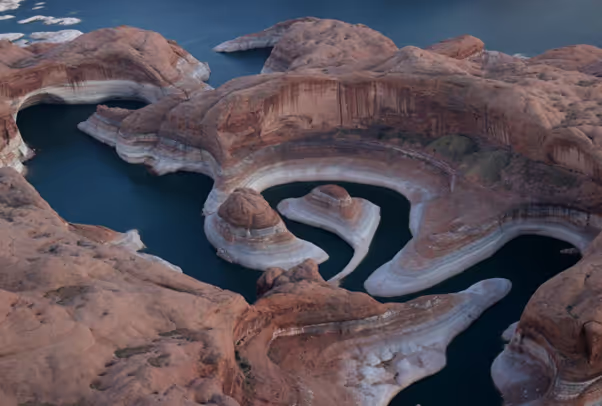.png)
That's enough water to fill the Reflecting Pool on the National Mall about 1,600times.
The capacity of the reservoir is shrinking because of sediments flowing in from the Colorado and San Juan rivers, according to the report. Those sediments settle at the bottom of the reservoir and decrease the total amount of water the reservoir can hold.
As of Monday, Lake Powell was around 25% full, according to data from the Bureau of Reclamation.
It's bad news for a region already facing water shortages and extreme wildfires due to the drought. National Oceanic and Atmospheric Administration drought experts said last week these conditions are expected to at least continue -- if not worsen -- in the coming months.
Lake Powell is an important reservoir in the Colorado River Basin. Both Lake Powell and nearby Lake Mead, the nation's largest reservoir, have drained at an alarming rate. In August, the federal government declared a water shortage on the Colorado River for the first time after Lake Mead's water level plunged to unprecedented lows, triggering mandatory water consumption cuts for states in the Southwest that began in January.
And last week, Lake Powell dipped below the critical threshold of 3,525 feet above sea level, sparking additional concerns about water supply and hydropower generation millions of people in the West rely on for electricity.

The system supplies water for more than 40 million people living across seven Western states and Mexico. Lakes Powell and Mead provide a critical supply of drinking water and irrigation for many across the region, including rural farms, ranches and native communities.
"It is vitally important we have the best-available scientific information like this report to provide a clear understanding of water availability in Lake Powell as we plan for the future," Tanya Trujillo, assistant secretary for water and science with the US Department of Interior, said in a statement. "The Colorado River system faces multiple challenges, including the effects of a 22-year-long drought and the increased impacts of climate change.
THANK YOU CNN FOR THE ARTICLE
.png)
Contribute to your future, a Non Profit Organization and buy us a Coffee with 3 simple clicks and a minute of your time. Imagine what we can do together.
To thank you, we will call you personally.
This is the amount that will be distributed amongst the current shareholders.
Current Share Holders
1102/500,000